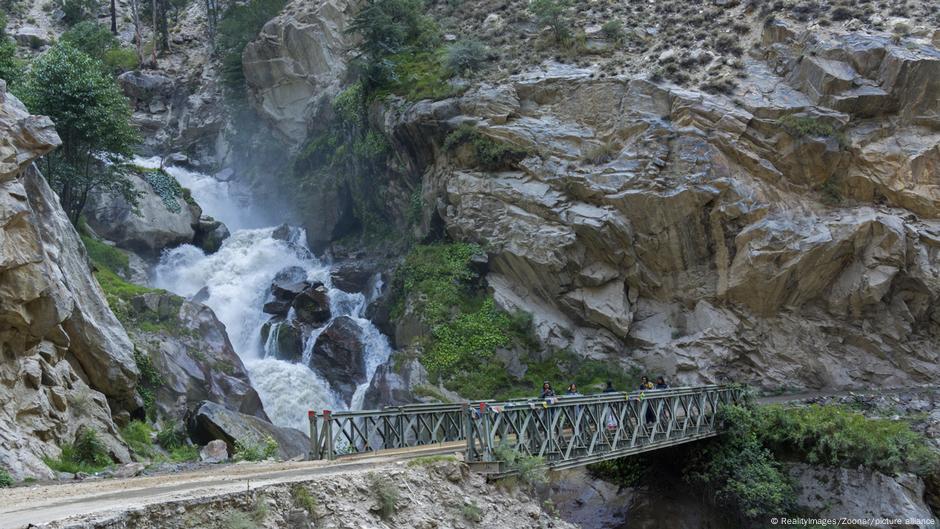Cold Damage in Apple Orchards - What We're Seeing in 2025
This season, we’ve received multiple reports from apple growers across Wisconsin describing unusual symptoms in their orchards. These symptoms point to cold injury that likely occurred during the early part of winter, following a warm fall. In this post, we summarize what we’re seeing, explain how cold hardiness works, and walk through what likely happened this winter to cause this level of damage. We also highlight the importance of monitoring for secondary issues in cold-damaged trees.
Over the past several weeks, we’ve received numerous reports from apple growers across Wisconsin describing unusual and concerning symptoms that have emerged as trees began to leaf out. One of the most frequently reported issues is trees that never broke dormancy at all. In many cases, growers noted that when they scratched the bark earlier in the spring, it still appeared green, suggesting the trees were alive. However, as the season progressed, these trees failed to develop shoots or leaves and eventually declined and died.
Another widespread symptom is bark splitting and cracking, but unlike typical southwest injury or sunscald, where damage is usually confined to the sun-exposed side of the trunk, the splitting this year has been observed around the entire circumference of the trunk and scaffold limbs. This kind of uniform cracking strongly suggests injury due to internal cold damage rather than environmental sun exposure.
In addition, several growers have reported damage at the rootstock shank, especially just below the graft union. In affected trees, this area often appears darkened, sunken, or necrotic, with clear signs that tissue viability has been compromised. Some growers have shared images of cross-sections of limbs or trunks they’ve cut to assess damage, and in many cases, you can clearly see brown or black streaking in the vascular tissue, which is a hallmark sign of cold injury to the cambium and phloem layers.


These symptoms point to significant winter injury that, in some cases, may not have been immediately apparent during early spring inspections. The combination of delayed budbreak, full-circumference bark splitting, and internal vascular damage all suggest widespread cold-related stress that warrants close monitoring and follow-up management.
To understand the cold damage we’re seeing this year, it’s important to first recognize that an apple tree is made up of two genetically distinct parts: the scion, which is the fruiting cultivar (like Honeycrisp or Gala), and the rootstock, which controls traits like tree size, anchorage, and stress tolerance. Although these parts are grafted together to function as a single tree, they respond independently to environmental cues, especially when it comes to cold hardiness.
Cold hardiness is the tree’s ability to survive freezing temperatures without tissue damage, and it differs not only between cultivars and rootstocks in the maximum level of cold hardiness they can achieve, but also in how quickly they gain (acclimate) and lose (deacclimate) cold hardiness throughout the season. This is a critical point, because under certain conditions we may see cold injury only in the scion or only in the rootstock, depending on which part of the tree was more vulnerable at the time of the cold event.
The process of cold acclimation begins in the fall and occurs in two phases. The first phase is triggered by shorter daylengths in late summer and early fall, which the tree detects through phytochromes in its leaves and bark. This photoperiod response initiates the transition to dormancy and provides moderate cold tolerance, typically in the range of –5 to –10°C.
To achieve deeper cold hardiness, tissues must then be exposed to progressively colder, sub-freezing temperatures. Ideally, this happens gradually, allowing the tree to continue hardening over time. However, when fall and early winter are unusually warm, as was the case this year, trees may not receive enough cold exposure to complete this second phase, leaving tissues under-hardened and vulnerable to cold snaps.
Research by Dr. Jason Londo at Cornell University has shown that these differences in cold hardiness among rootstocks and scions become especially pronounced during warm winters. Under normal cold winter conditions, most commercially used cultivars and rootstocks in the Midwest can fully acclimate and avoid damage. But in years like this one, when winter arrives late or is interrupted by prolonged warm spells, some genotypes fail to develop sufficient hardiness, putting them at greater risk for injury when temperatures drop sharply.
Understanding how acclimation and deacclimation differ among tree components helps explain why we sometimes see localized damage, such as injury confined to the rootstock while the scion appears healthy, or vice versa.
This past fall and winter created a perfect storm of conditions that likely contributed to the cold damage we are seeing in apple orchards this spring. We experienced a mild fall, with above-average temperatures stretching well into November and early December. These warmer-than-normal conditions likely delayed or limited the ability of both rootstocks and cultivars to fully acclimate and achieve maximum cold hardiness before winter set in.
While we did experience some cold days in December, January, and February, the overall pattern was inconsistent, intermittent cold snaps surrounded by warmer periods. In terms of cumulative cold exposure, this winter was warmer than previous years, which likely disrupted the typical pattern of slow, progressive acclimation that trees rely on to prepare for midwinter extremes.
Another key factor was the lack of persistent snow cover. Snow acts as a natural insulator, especially for the root system and the rootstock shank, protecting these more vulnerable parts of the tree from direct exposure to freezing air temperatures. In many areas, there were extended periods without snow cover, leaving these tissues unprotected during cold events.

We believe that the combination of a warm fall, intermittent winter cold, and bare ground likely explains the wide range of symptoms reported by growers. These include trees that never broke dormancy, bark splitting on scions, and sunken, discolored tissue at the rootstock shank. While we can’t directly observe root damage without excavation, it is very possible that cold injury to the roots also occurred. This could help explain the high number of trees that failed to leaf out entirely, despite having green cambium tissue earlier in the spring.
Moving forward, it’s becoming clear that rootstock cold hardiness may be the Achilles’ heel of our current apple production systems under warming winter conditions. As our climate continues to shift and warm winters become more common, we’ll need to pay closer attention to rootstock performance under variable cold exposure. Cold hardiness, not just of the scion, but especially of the rootstock, will need to be a key factor when selecting varieties and planning new orchard blocks.
Cold injury caused by late winter or early spring temperature drops can lead to immediate losses in buds, blossoms, and young fruit, but one of the less visible and more lasting consequences is an increased vulnerability to secondary diseases. When apple trees experience cold damage, the injured tissue—especially in bark, vascular systems, buds, and even roots—becomes an easy entry point for opportunistic pathogens. These wounds can result in infections that often go unnoticed until they begin to cause visible symptoms later in the season. Fungi such as Botryosphaeria spp. (the cause of black rot and limb cankers), Cytospora spp., Phomopsis, and Nectria species are all common secondary pathogens that take advantage of stressed or damaged wood. Symptoms to watch for include discolored or sunken bark, shoot dieback, and even the development of fungal fruiting bodies. Growers should be especially alert in areas of the orchard known to have suffered cold injury, as these pathogens may remain latent (inactive) until stress or favorable weather triggers symptom development.
Canker pathogens affecting cold-damaged trees are often especially problematic in newer high-density apple plantings due to the structural and physiological characteristics of these systems. These young trees have thinner bark and less woody tissue, making them more vulnerable to cold injury and less capable of compartmentalizing infections. In addition, the close spacing of trees and higher number of pruning cuts in these systems create more potential entry points for canker pathogens. The rapid canopy development in young plantings can also create humid microclimates that favor fungal infection and spread. As a result, canker pathogens can establish quickly, spread rapidly, and significantly reduce the productive lifespan of high-density plantings if not managed proactively.
Management of these secondary infections begins with early detection. Growers should scout affected blocks regularly, starting in early spring, looking for signs of cankers or dieback. Pruning out infected limbs during dry conditions can help reduce disease pressure. Good sanitation practices, such as removing prunings and dead wood, are also essential. Supporting overall tree health is another key strategy. Cold-injured trees are already stressed, so it’s important to avoid further stress by managing irrigation carefully and applying balanced nutrition. Avoid overuse of nitrogen fertilizers, as this can lead to excessive vegetative growth and further weaken structural integrity. Keeping detailed records of where cold injury and secondary diseases occur can help guide future orchard management, including decisions on cultivar selection, site-specific protection measures, and pruning schedules. While growers can’t always prevent cold events, a strong response in the weeks and months that follow can make a significant difference in minimizing long-term damage and preserving orchard health.
This article was posted in Apples and tagged Amaya Atucha, Apples, cold damage.










